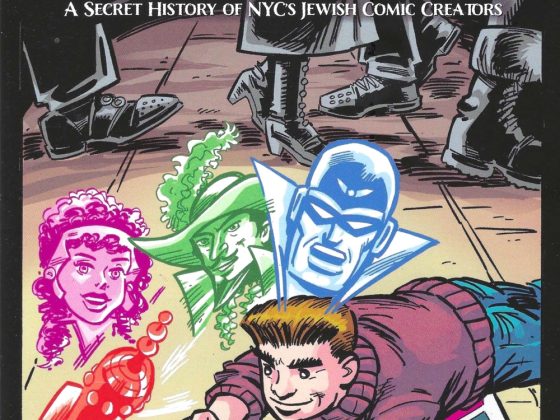Tex Blaisdell was a long time comics pro, both skilled and well liked, but by the early 1970s, not in top form. He’d done work on many newspaper comic strips, most recently a stint on Little Orphan Annie after its creator, Harold Gray’s death. For some of that time he’d collaborated with Joe Orlando on Annie, and they’d grown friendly. When his time on Annie ended, he shifted to mostly inking for DC, spending considerable time working in the office’s open bullpen area. But that was a tough way to make a living, compared to the more lucrative newspaper strip field.
DC was going through a phase where the ‘mystery’ titles (scary stories far softer than the classic E.C. material) were the most successful, and in a generally difficult market for comics on newsstands, were launching more titles in that genre and rebranding others to try to get the benefit of that magic (WEIRD WESTERN, WEIRD WAR, WEIRD WORLDS, WEIRD MYSTERY and even for a moment, WEIRD ADVENTURE COMICS). Editor Murray Boltinoff’s titles were often the best-sellers, but in his 60s, he wasn’t anxious to take on additional assignments, so Joe ended up carrying a larger load. To help Tex out, Joe and publisher Carmine Infantino decided to give him a shot at editing a couple, with the assumption that Joe would keep an eye on his work (and that as Joe’s assistant, I’d take care of the administrative side). WEIRD MYSTERY would shift to Tex, and he’d launch a new anthology, TALES OF GHOST CASTLE.
Proximity giving me the advantage, I got the assignment to write the first issue of GHOST CASTLE, from intros through the three stories…everything but a Sergio Aragones page. Scheduling on the art side would ultimately make that not quite work out, and one of my stories would run elsewhere with a David Michelinie/Marty Pasko tale filling the third slot. For the host, I came up with the conceit of a librarian in the ghost castle, Joe sketched him out as a tall, gangly fellow, modelled after Tex hunched over his drawing board, and we tagged him Lucien.
In the waxing and waning that DC often experienced in the ‘70s, GHOST CASTLE was gone after three issues, and Tex’s editorial career ended within a year. Lucien vanished from the minds of all but the most trivial-minded for over a decade. The mystery tide went out as well, as the newsstand channel of distribution faded in the ‘80s, and by the end of that decade most of those titles at DC or any other comics publisher were gone.
When Neil Gaiman began SANDMAN, he wanted to connect it to the larger DC universe of characters. He didn’t have a reputation yet, the Vertigo brand hadn’t been born, and, well, new titles needed all the help they could get. On the other hand, the company wasn’t willing to put its star characters on just any title spreading them thin. DC had done that in the ‘60s (Batman guest-starring in JERRY LEWIS, for example), and it hadn’t been an effective long term strategy. So Neil scooped up the hosts from the defunct mystery line, snuck in a hard-to-recognize JUSTICE LEAGUE villain, and of course connected the tale to the previous SANDMAN series going back to the dawn of DC. Cain, Abel and Goldie showed up much as they had been, but Lucien got a significant promotion: from the librarian of a ghost castle to the librarian of the entire realm of the Dreaming. I was delighted to see the old guy get a new lease on life.
And delighted again, now three decades later, to see him…er, now her…come to life with Vivienne Acheampong’s masterful performance as Morpheus’ most loyal servant. And in a lavishly beautiful production whose budget for a single hour of programming probably exceeds the total that had been spent on DC’s one movie, two live action tv series and multiple live action serials that had been filmed by the time I wrote those brief words introducing the character. What a strange journey it’s been…
